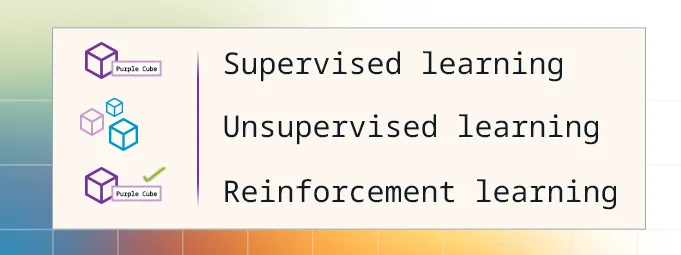
In Part 3 of our AI Glossary for L&D, we venture into the realm of the more specialized AI techniques and applications that are pushing the boundaries of what's possible.

Deep learning is a subset of machine learning in which artificial neural networks with multiple layers (hence "deep") analyze data and solve complex problems. It's like giving your AI a more intricate and powerful brain, so it can learn from vast amounts of information and discover patterns that would be impossible for humans to identify.Imagine a child learning to identify different animals. Initially, they might just focus on basic features like size and color. But as they learn more, they start to recognize subtle differences in shapes, patterns, and behaviors. Deep learning works in a similar way—it allows AI to go beyond surface-level features and understand the nuances within data.
Deep learning is the engine behind many advanced AI applications, including large language models (LLMs) and some types of generative AI (genAI).

Supervised, unsupervised, and reinforcement learning describe three fundamental types of machine learning. Recall from Part 1 of the AI Glossary for L&D where we explained that, in machine learning, “Systems are fed vast amounts of data and use it to recognize patterns, make predictions, and take actions using the data, all without human intervention.” Supervised, unsupervised, and reinforcement learning refer to the methods in which the data is fed and how the system is trained to recognize the data.
Here’s a simple analogy to illustrate this concept. Imagine teaching a child to recognize fruits:
These learning paradigms are core concepts in machine learning. They are used to train various AI systems, including deep learning models.

Transfer learning is a technique where an AI model trained for one task is used as a starting point for a new, related task. This allows the AI to leverage its existing knowledge and learn the new task more efficiently. It's like a chef who knows how to bake cakes using their skills to learn how to make pastries.
Transfer learning is a technique often used in deep learning to accelerate the training process and improve performance on new tasks.

Fuzzy logic is a way of dealing with uncertainty and imprecise information. It allows AI to make decisions based on degrees of truth rather than strict true or false values. It's like saying "somewhat likely" or "mostly true" instead of just "yes" or "no."Think of a thermostat. Instead of just turning on or off at a specific temperature, it can gradually adjust the heating or cooling based on a range of temperatures.
Fuzzy logic is a different approach to AI that can be used in conjunction with other techniques, such as machine learning, to handle situations where data is imprecise or ambiguous.
Fuzzy logic can be leveraged to:

Explainable AI aims to make AI's decision-making processes more transparent and understandable to humans. It's like having the AI show its work so we can understand how it arrived at a conclusion.Imagine a doctor diagnosing a patient. They don't just say "you're sick"—they explain the symptoms, test results, and reasoning behind their diagnosis.
XAI is crucial for building trust and accountability in AI systems, especially in sensitive areas like education, healthcare, finance, and legal domains. It can be applied to various AI techniques, including deep learning and machine learning.
In L&D, XAI can help us understand why an AI model made a particular recommendation or assessment, fostering trust and transparency in AI-driven learning solutions.
There is one more chapter in our AI Glossary for L&D to explore. Click on the link to Part 4 (below) to learn about the algorithms and architecture that form the basis of many of today’s AI platforms. Need a refresher? Visit Parts 1 or 2 to brush up on the basics.